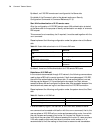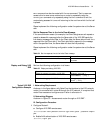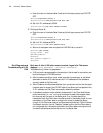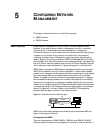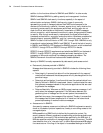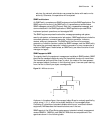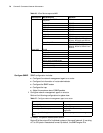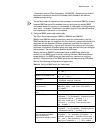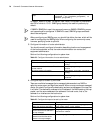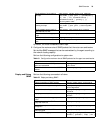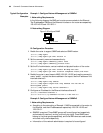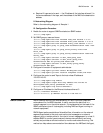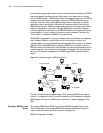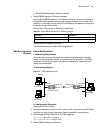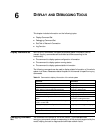
78 CHAPTER 5: CONFIGURING NETWORK MANAGEMENT
By default, SNMPv3 is used. The default view name in the system is ViewDefault,
and OID of which is 1.3.6.1. SNMP group has only the read-only authority by
default.
If SNMPv1/SNMPv2c is used, the community name or SNMPv1/SNMPv2c groups
and users should be configured. If SNMPv3 is used, SNMPv3 groups and users
should be configured.
Before configuring an SNMP group, you should first define the view, which will be
used for configuring the SNMP group. When configuring the community name,
however, specifying a view is optional.
3 Configure information of router administrator
You should correctly configure information describing location and management
of the local equipment so that the network administrator can contact the
equipment administrator.
Perform the following configurations in system view.
Table 59 Configure information of router administrator
4 Configure traps to be sent by the router
Traps are unsolicited messages that a managed device sends to an NMS for
reporting some urgent and significant events. When a router works as a managed
device, you should configure the destination and source addresses of the trap that
it will send. The destination address is the IP address of the NMS receiving the trap
packet, and the source address is the address of the local router, that is, the
address of an interface on the local router.
Perform the following configurations in system view.
Table 60 Configure the traps to be sent by the router
Delete a user from the SNMP
group
undo snmp-agent usm-user { v1 username
groupname | v2c username groupname | v3
username groupname }
Operation Command
Set the administrator ID and the contact method snmp-agent sys-info contact
string
Restore the default administrator ID and the
contact method
undo snmp-agent sys-info
contact
Set router location information snmp-agent sys-info location
string
Restore the default router location undo snmp-agent sys-info
location
Operation Command
Enable the router to send traps snmp-agent trap enable [ trap-type ]
Disable the router to send traps undo snmp-agent trap enable
Specify the interface whose address
is bound as the source address in
the trap messages
snmp-agent trap source interface-type
interface-number
Remove the interface whose
address is bound as the source
address in the trap messages
undo snmp-agent trap source



